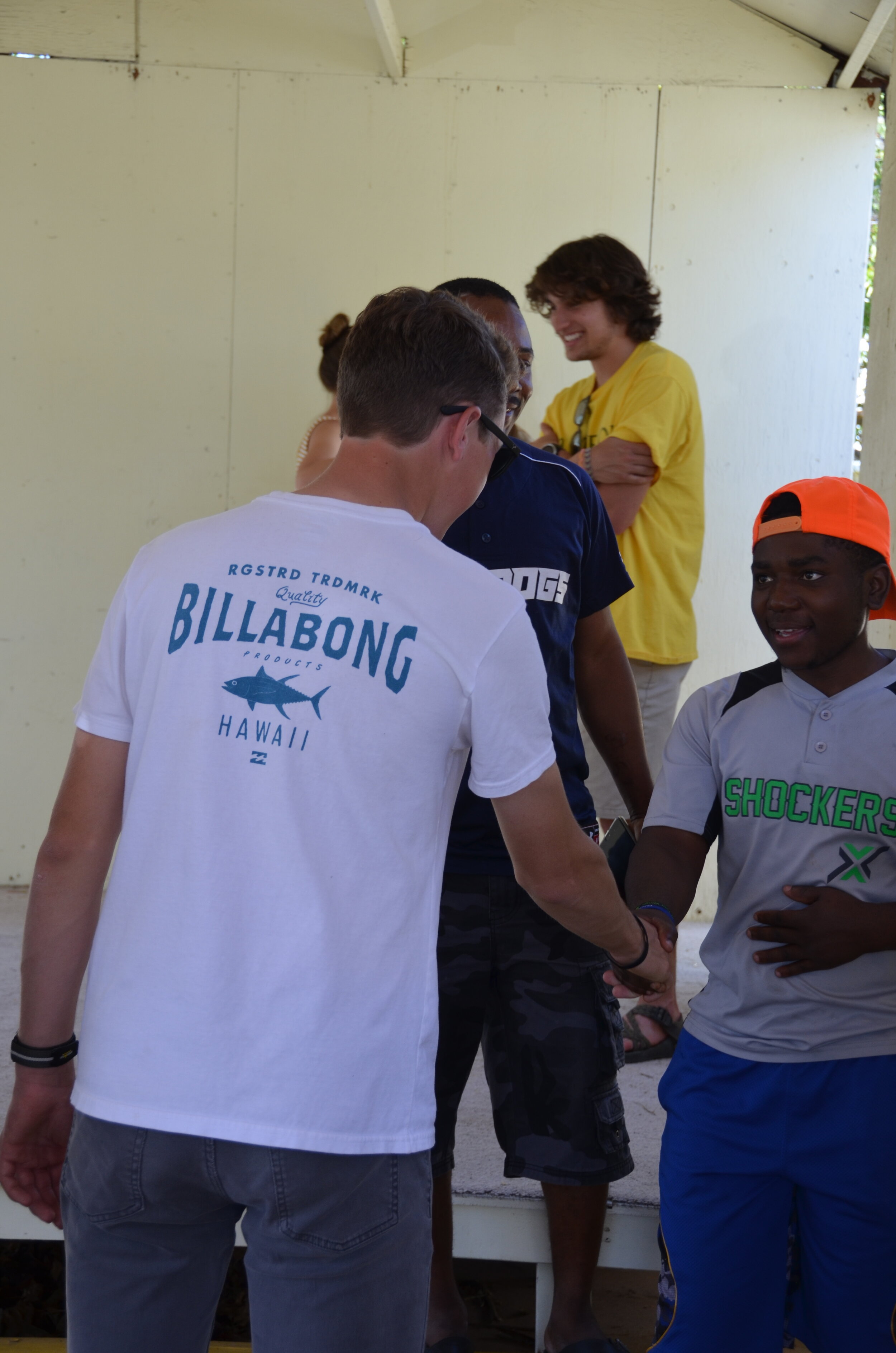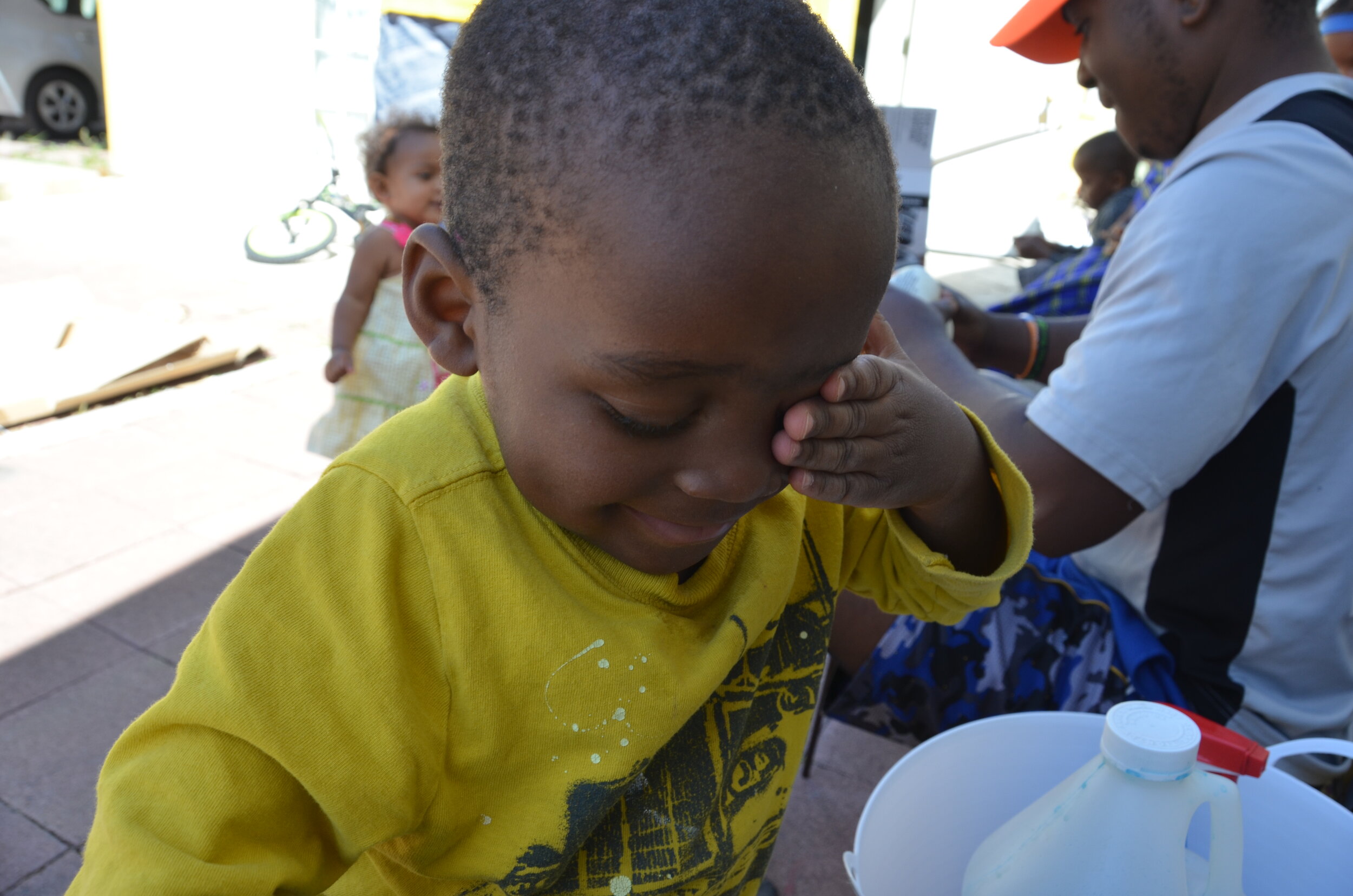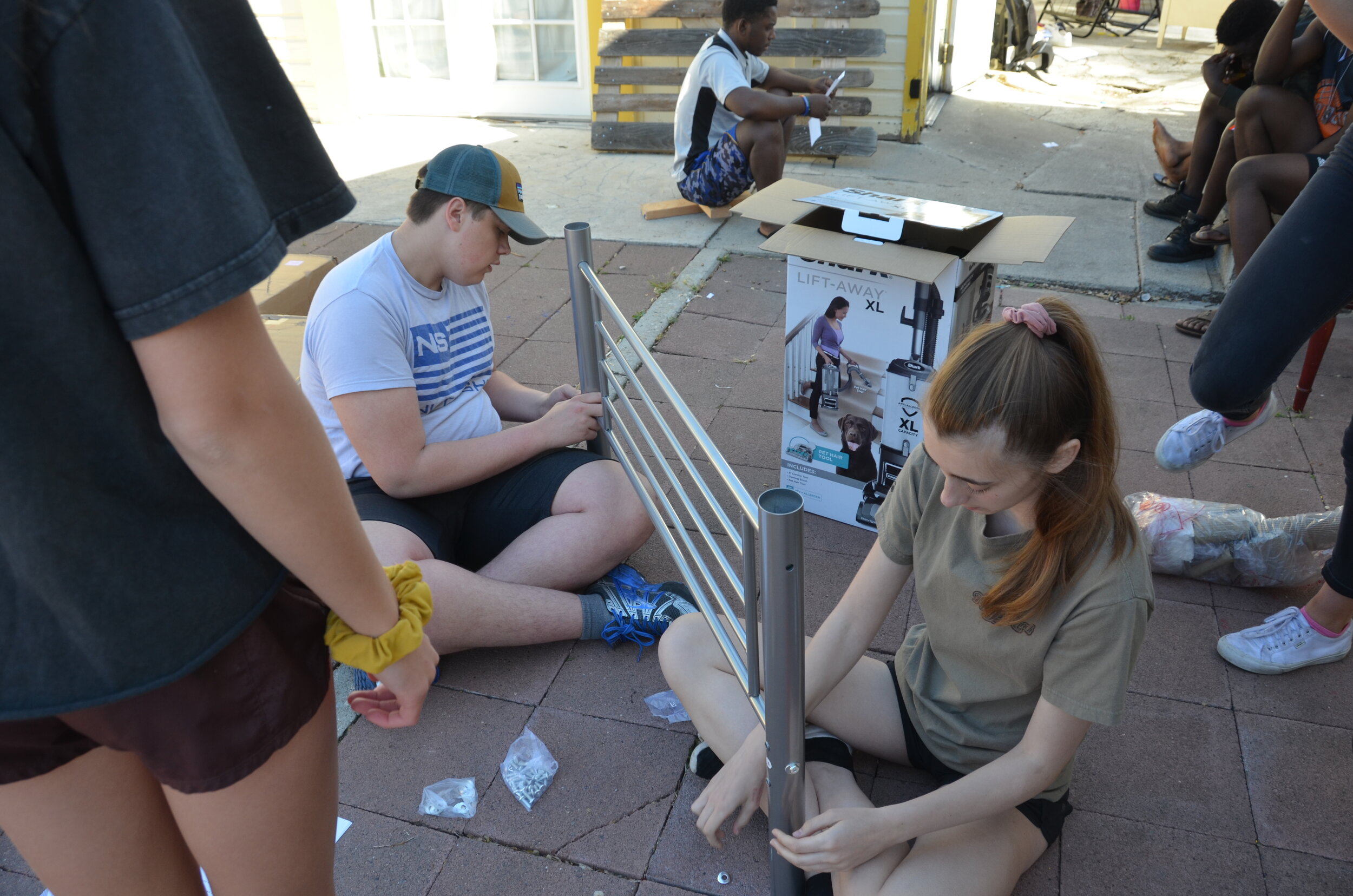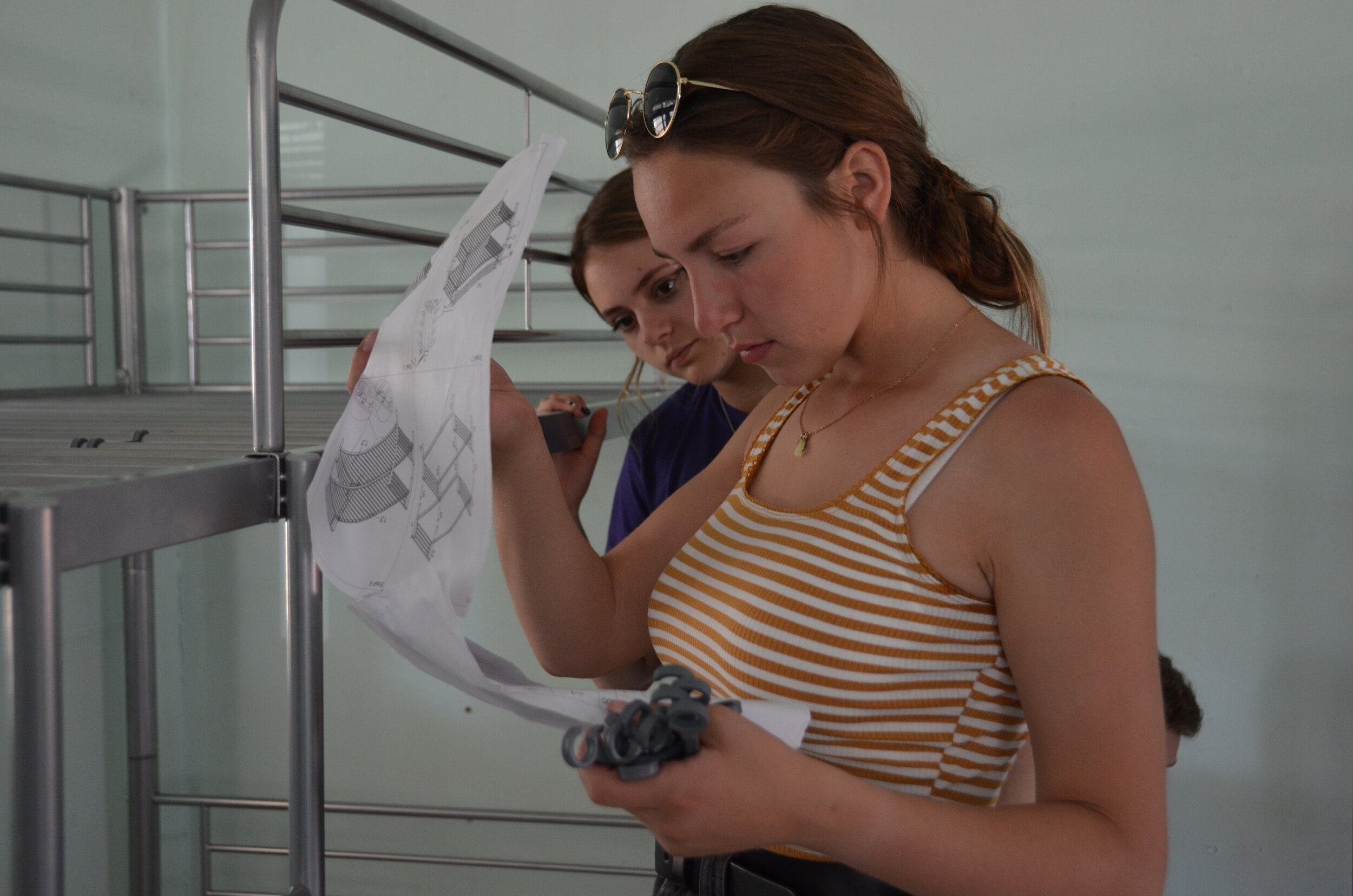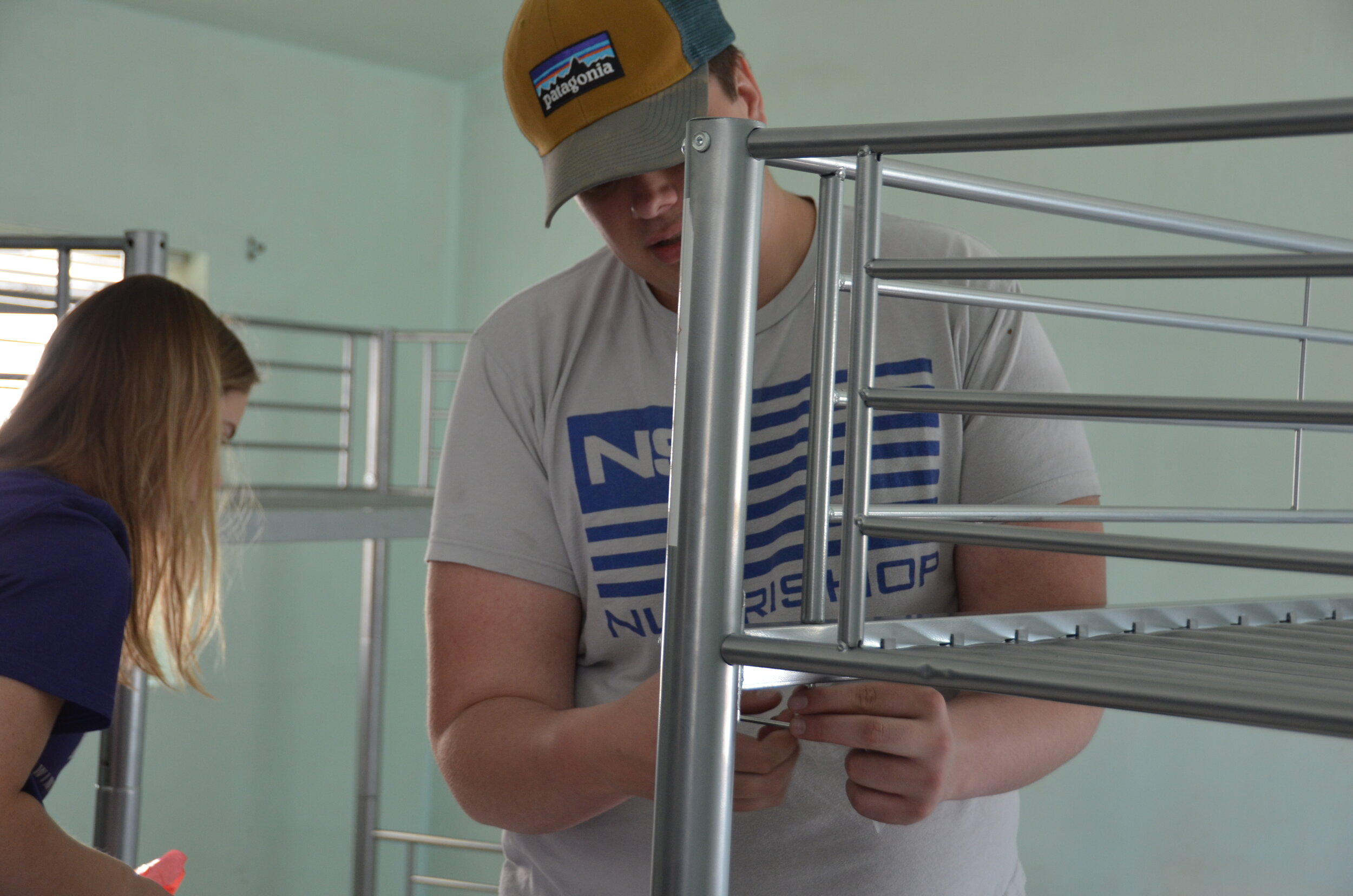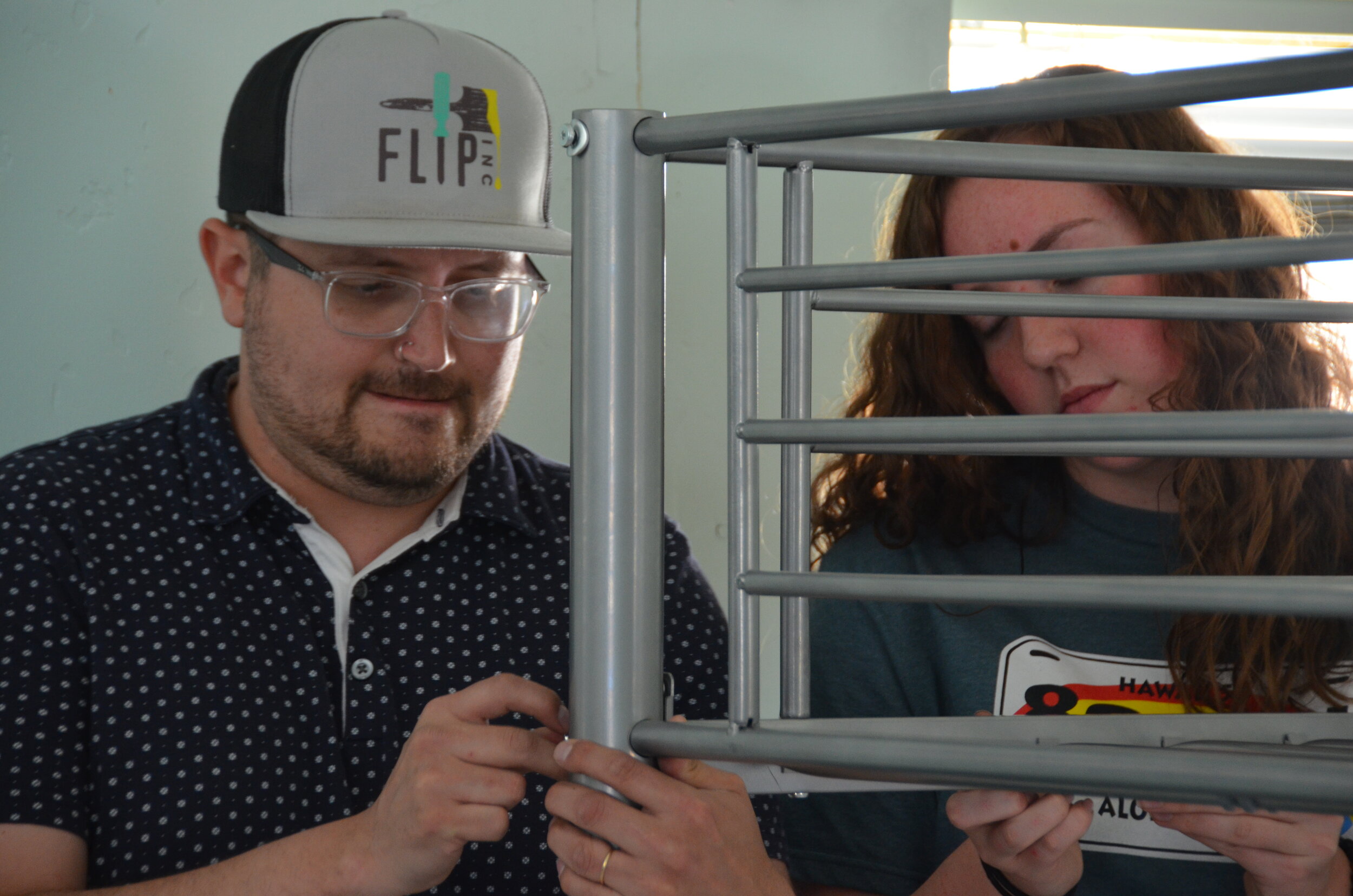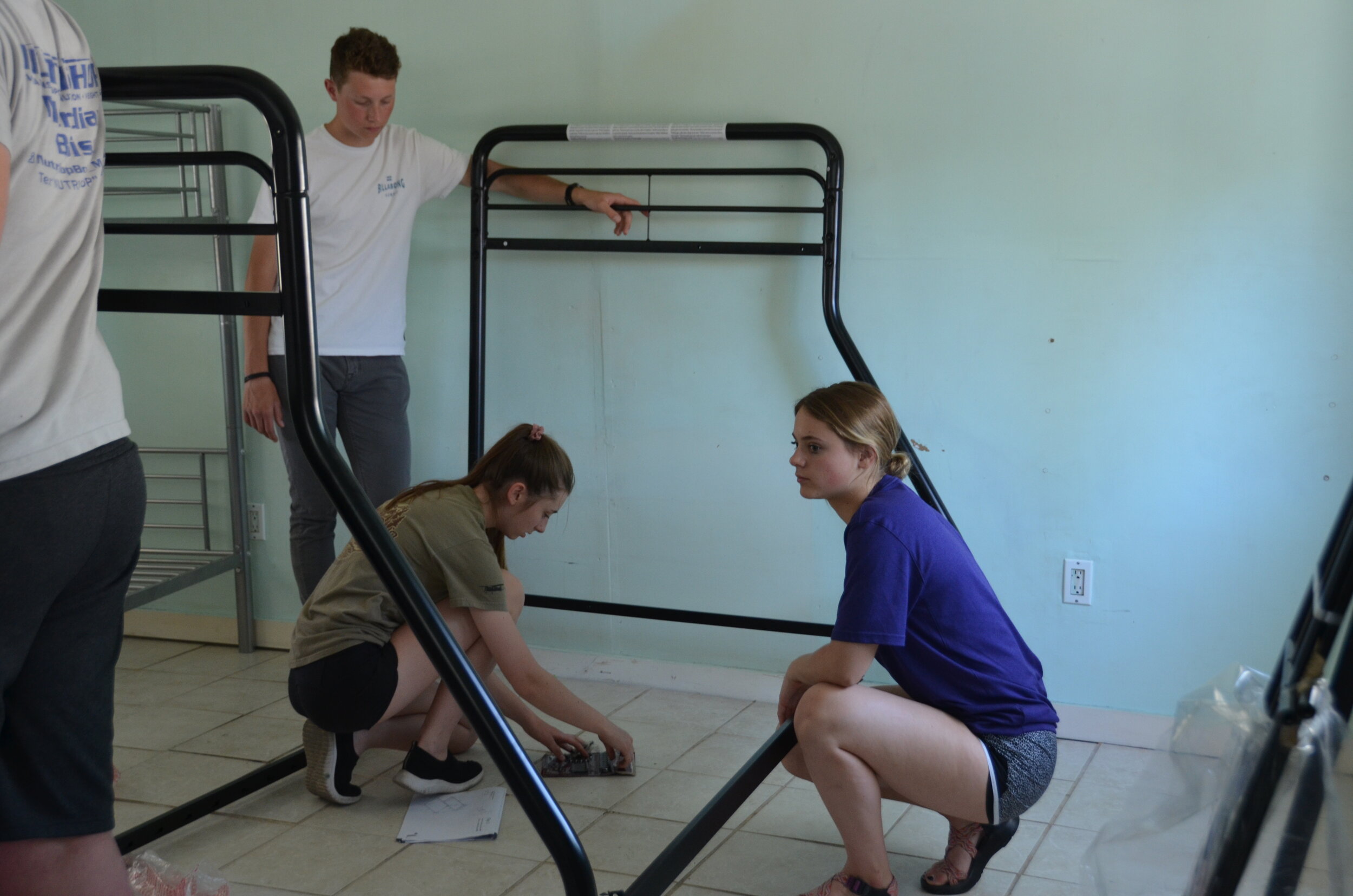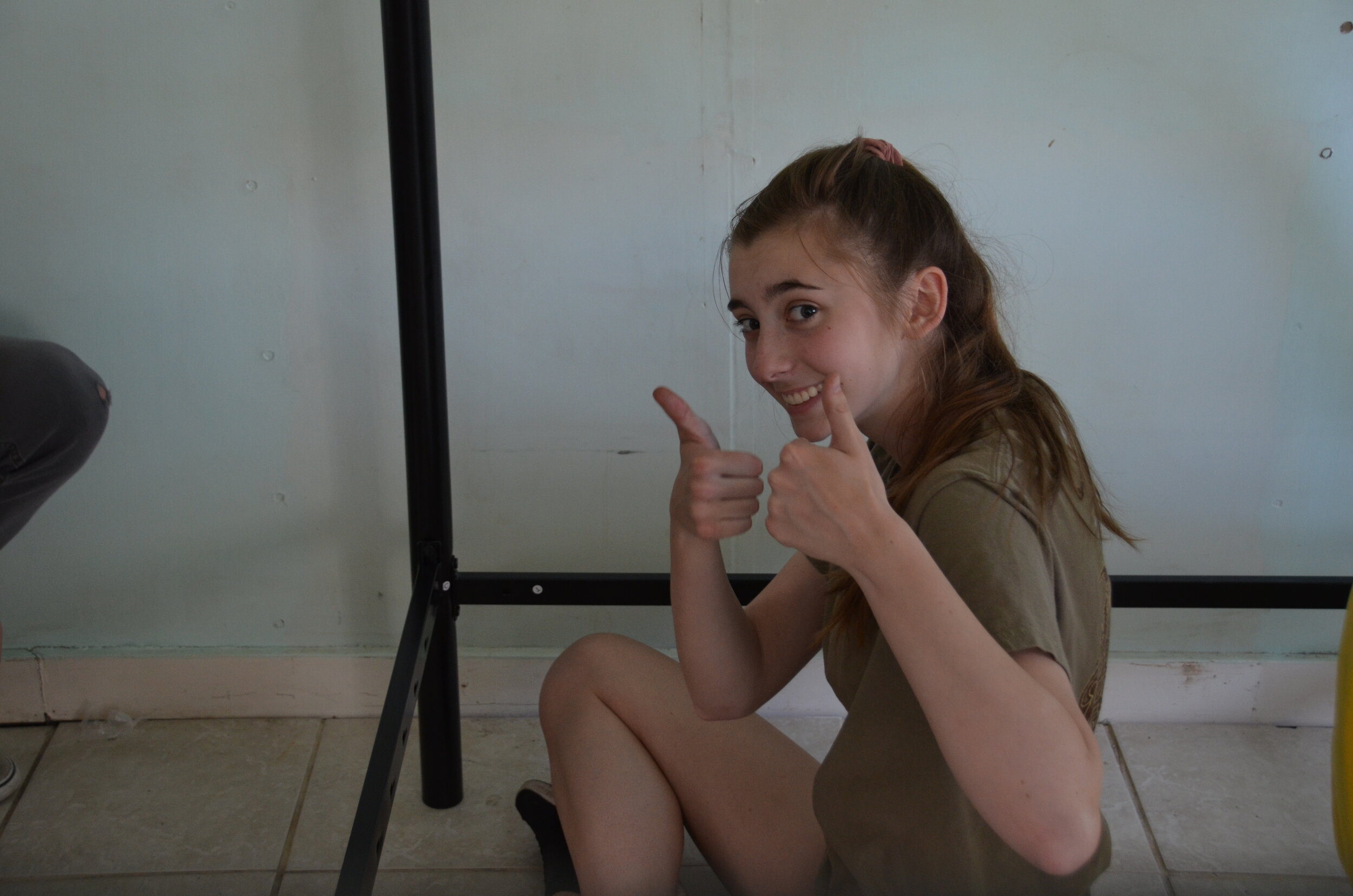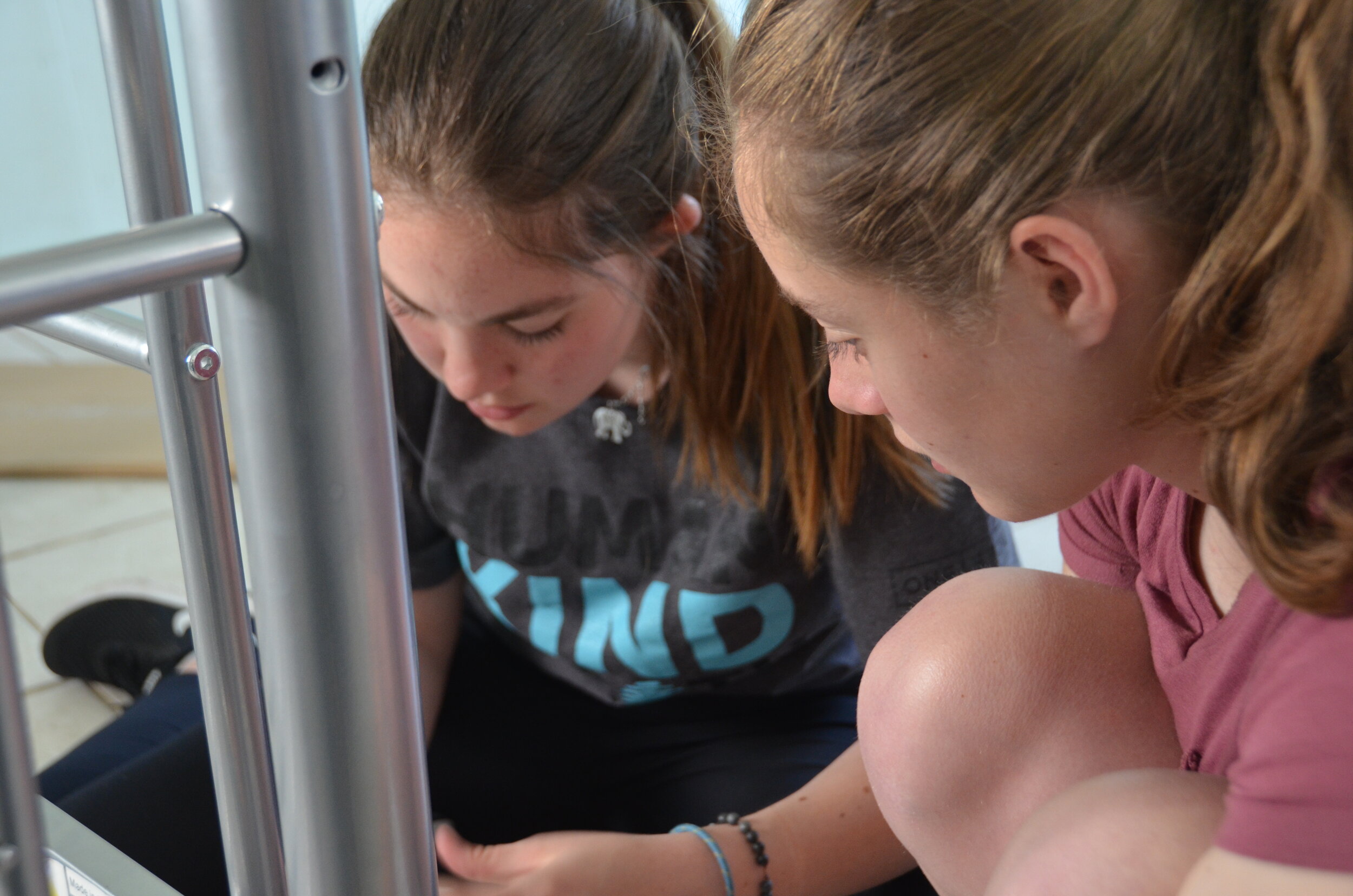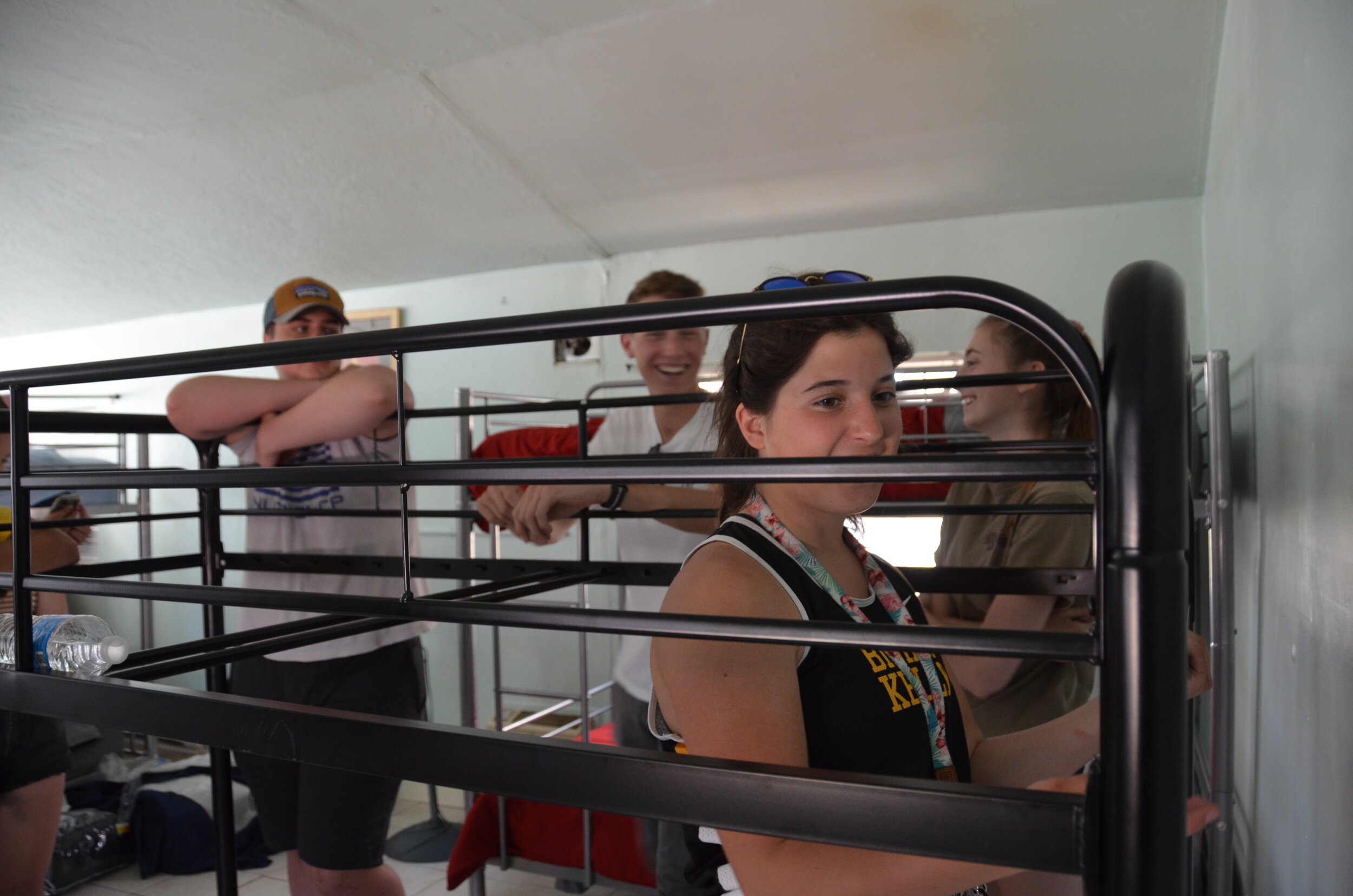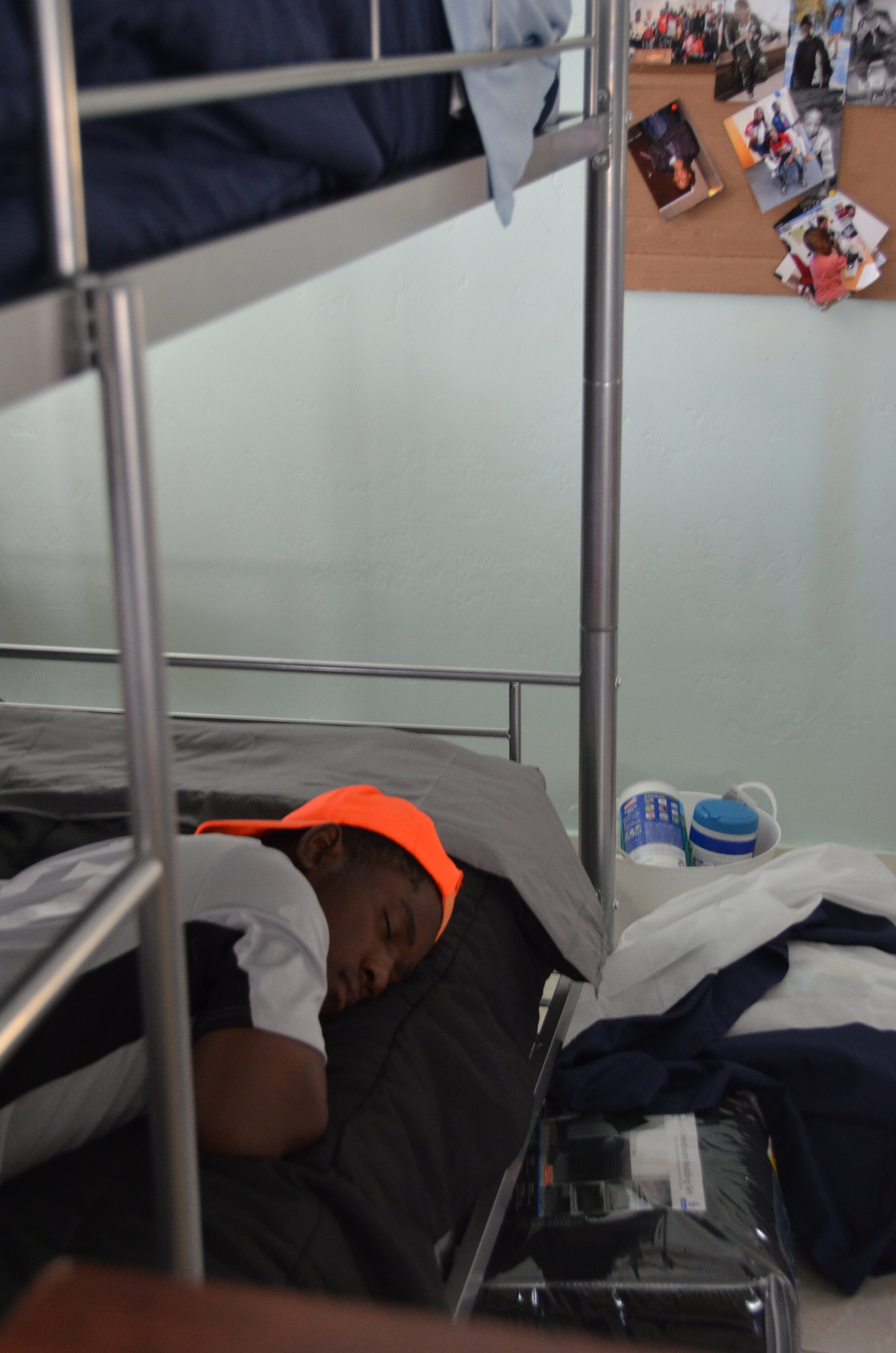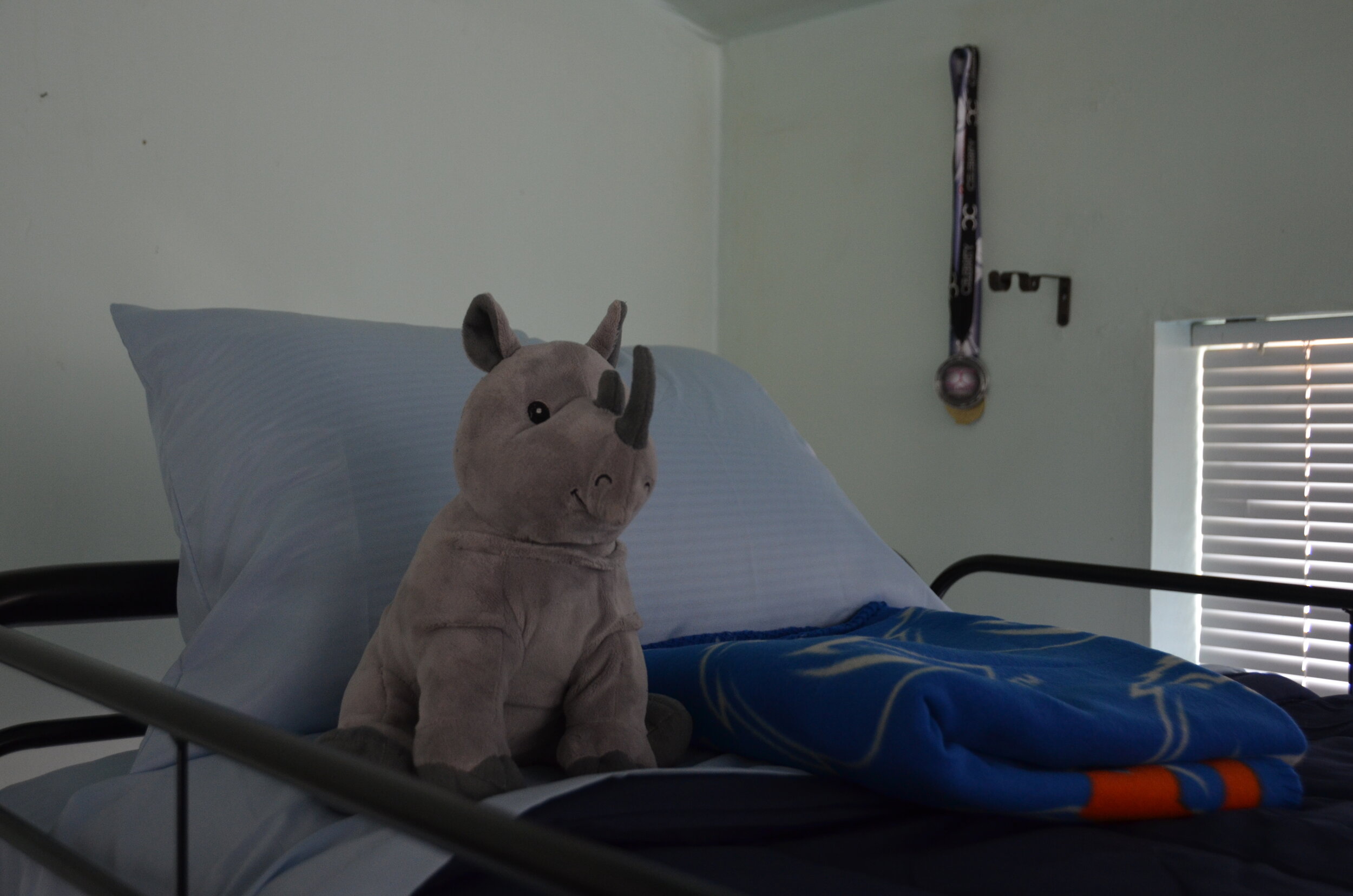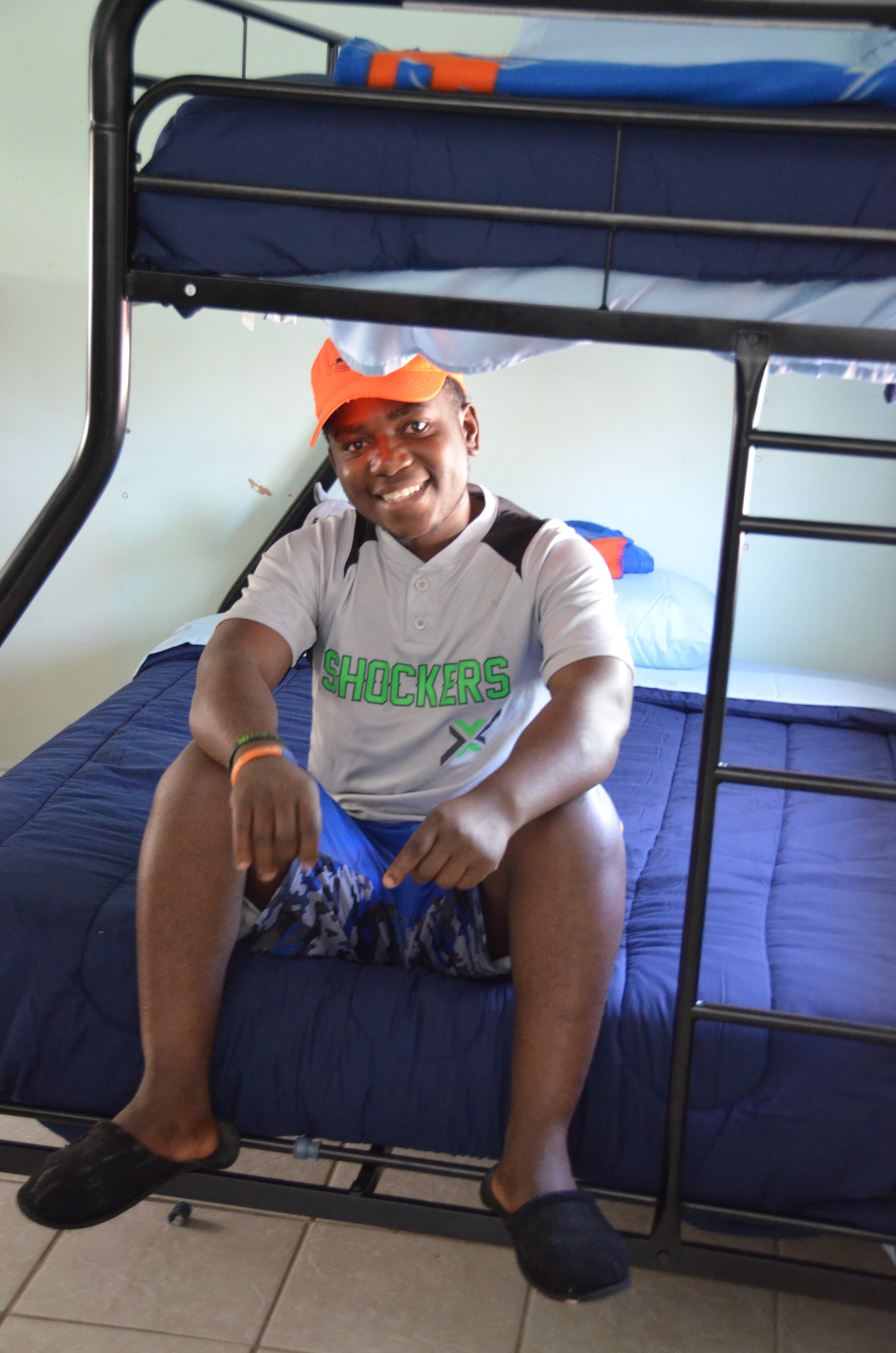How might we help children of New American families in making their house THEIR home?
When the FLIP (Families Living in Inspired Places) team first found out that they would be working with New Americans from the Democratic Republic of Congo, they were excited but apprehensive because of the massive language barrier – the family of New Americans they’d be working with spoke Swahili and French, but limited English.
The next step for the student planning team was to figure out how they would communicate best with the family, and with help from a translator, the team took their first trip to the family’s home. The family greeted the students and welcomed them into the house where they would be allowed to snap pictures, take measurements, and learn more about the space they would be working with. As the meet and greet progressed, the students found out that this was a family of ten that included six boys and two girls all between the ages of 2 and 20 years old. The family used a detached garage space as the bedroom for four of the boys and as a sewing room for the parents. This living arrangement was tight, so the family asked if the FLIP team could focus on this room for their project.
Throughout the next few months, the team spent time reimagining the room layout, exploring types of furniture that would maximize space and organization, and iterating on how to best connect with the family. They spent time researching the Democratic Republic of Congo and its vast history and cultural customs. For example, the oldest child receives special privileges in this culture, so the team found bunk bed sets with a full-sized bed for the oldest boy. After deciding which furniture could be repurposed from the original room, the team purchased 3 sets of bunk beds, 4 dressers, 1 new mattress, and 4 new bedding sets. The students then focused on the room design with the help of a volunteer interpreter named Mary. Mary was able to ask the family which colors and features they preferred so the students could incorporate those preferences into the final design.
On the day of implementation, the team was excited to get to work. Mary had asked the family to remove as much furniture from the room as possible beforehand, so with that head start the team split into two groups. One group started deep cleaning the room and the other started assembling the bunk beds. Once the room was spick and span, the team and the boys began hauling and staging the new beds, mattresses, dressers. Some students helped the boys set up their spaces and put on new bedding, while others worked outside pulling weeds, trimming bushes, and doing other yard work around the garage. Once everything was set, the boys could finally start settling into their new home. The family was really excited for the change, and the team enjoyed seeing their hard work pay off.
Outcomes:
In all, the family received three new bunk beds, a new mattress, three new dressers, a clothing rack, Boise State University blankets, four sets of new bedding, and more.
Reflections from the planning team:
“This was my third time working with FLIP families, and it was the most rewarding experience yet!” – Sophie Moylan, One Stone member
“I was moved by the impact that we had on the family. Even though there was a language barrier, I could see that the family was very happy and grateful for what we were able to do.” –Avery Hormaechea, One Stone member
“It was a true test of empathy. I loved the process of finding out what would work for the family and then needing to figure out how to make that work on our end.” –Mason Kirk, One Stone member


